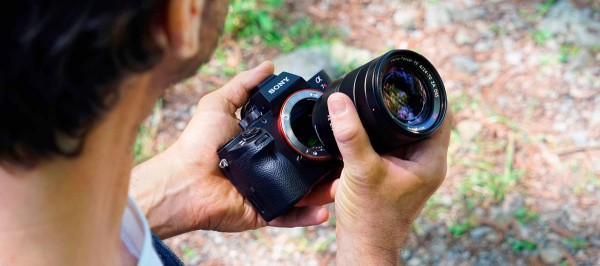
The photography monster that is known as the Sony a7R II is a camera with a back-illuminated 35mm full-frame CMOS image sensor with 42.4 megapixels that’s capable of recording 4K video. It’s been out for nearly 6 months and the camera is already becoming a darling and received the highest ever score from DPreview. Now you can add Photography Blog to the list of of reviewers who has been blown away by what the camera can offer.
The Sony A7R II is a remarkable camera, both on paper and in practice. Offering a mouth-watering list of desirable features, the A7R II delivers on almost all of its promises…
After the jump, why the Sony a7R II has been crowned their camera of the year.
Just a few highlights from the extremely extensive review, starting with its performance in low light.
The A7R II’s EVF system also performs very well indoors in low light, typically the scourge of most EVFs which have to “gain-up” to produce a usable picture, resulting in a noticeably grainier picture. The A7R II doesn’t suffer from this unwanted effect at all, making its electronic viewfinder the equal of and in many areas better than a DSLR’s optical viewfinder. The truest testament to the A7R II is that we almost exclusively used it by holding it up to eye-level, something that we wouldn’t do unless the EVF was of sufficient quality.
Smart on Sony’s part to offer something like this.
The A7R II is also the first A-series camera to be able to use an external USB power source to charge it whilst still taking pictures, which is very beneficial for time-lapses or longer video clips.
When people stop finding things to complain about the cameras from Sony, they then turn their heads to the mythical more limited lens options. Seems like that’s no longer a problem.
The A7 II’s full-frame sensor and the faster lenses that we tested it with hit the sweet spot between portability and image quality, and commendably Sony are finally expanding their lens range, a criticism that has always been leveled at the overall system in the past.
Perhaps even more important is the ability to use lenses from other systems, most notably Canon, and in some instances for them to autofocus as quickly as on a Canon DSLR. Sure, it’s something of a minefield to find a combination of adapter and lens that works reliably well, but being able to use modern DSLR lenses, classic rangefinder lenses, and older Sony/Minolta A-mount lenses whilst enjoying a fantastic manual-focus experience and fast auto-focusing is a real eye-opener. There’s even an adapter for Nikon lenses on the horizon…
Mark Goldstein concludes with:
The Sony A7R II certainly succeeds in its attempt to turn the heads of DSLR owners. It won’t satisfy the needs of professional sports shooters, the menu system isn’t as refined as the competition, and some people will still put their trust (however blindly) in a more conventional DSLR, but the A7R II is a undoubtedly a break-through camera for Sony, both in terms of the promises that it makes, and the realisation of those promises…
In short, the the Sony a7R II is a winner in every way possible but for all you photography enthusiasts, I highly recommend hitting the source link and reading the very in-depth review.
Discuss:
Do you think Sony is able to go toe to toe with rivals Nikon and Canon now?
[Via PhotographyBlog]

You must be logged in to post a comment.